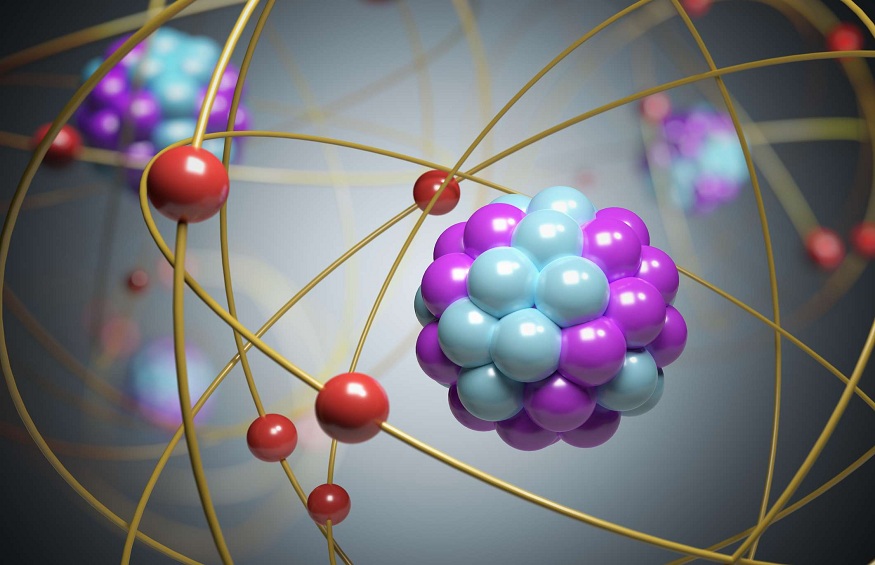Atom is derived from the ancient Greek term “invisible.” Chemists first used the word to describe irreducible chemical elements in the nineteenth century. A dense nucleus is enveloped by a probabilistic “cloud” of electrons, according to the existing theoretical model of the atom. An atom is the smallest portion of an element that maintains that element’s identity.
Atomic theory is a classification system for numerous elementary states, facts, and qualities of atoms, which includes both postulates and axioms.John Dalton proposed the first scientific theory of atomic structure in the 1800s. Apart from the term atom, what is a molecule?. Molecules are made up of atoms arranged in groups. In this article, we will explain the atomic theory of Dalton’s and its importance in detail.
Table of Contents
Atomic models
Models at the Atomic Level
During the 18th and 19th centuries, many scientists attempted to characterise the structure of the atom using atomic models.Each of these models had its own set of advantages and disadvantages, and they were all important in the creation of the present atomic model. Scientists including John Dalton, J.J. Thomson, Ernest Rutherford, and Niels Bohr made significant contributions to the discipline. This section focuses into their theories about the structure of the atom.
Dalton’s Theory of Atomic model
All matter, according to English chemist John Dalton, is made up of indivisible and indestructible atoms. He also claimed that all atoms of a given element were the same, but that the size and mass of atoms of different elements differed.
Postulates
The following are his theory’s postulates:
- Atoms are the building blocks of all matter.
- Atoms are indivisible
- There is just one type of atom in each element.
- Each atom has a fixed mass that varies depending on the element.
- During a chemical reaction, atoms rearrange themselves.
- Atoms cannot be generated or destroyed, but they can be changed into various forms.
Disadvantages of Dalton’s Atomic Theory:
- The theory failed to explain the existence of isotopes.
- There was no adequate explanation of the atom’s structure.
- The presence of particles inside the atom was later discovered, proving that atoms are divisible.
Postulates of JJ Thomson Model of Atom
In the early 1900s, English chemist Sir Joseph John Thomson proposed his model for defining atomic structure.For the discovery of “electrons,” he was later awarded the Nobel Prize. His research is based on a technique known as the cathode ray experiment.
- An atom, according to Thomson, is made up of a charged sphere in which the electrons are embedded.
- The negative and positive charges are equivalent in magnitude. As a result, the atom is electrically neutral throughout.
- The first atom model to be proposed and taken into consideration.
- He proposed an atom model that resembled a Christmas pudding/watermelon.
- The charge within the atom is compared to the red edible section of the watermelon.
- The watermelon’s black seeds are compared to the electrons that are contained in it.
Postulates of Rutherford Model of Atom
Rutherford concluded that the model of the atom derived from the -particle scattering experiment was as follows:
- An atom has a nucleus, which is a charged centre. Nearly all of an atom’s mass is contained in its nucleus.
- The orbits of the electrons around the nucleus are well-defined.
- The nucleus’ dimensions are extremely modest in comparison to the atom’s dimensions.
Postulates of Neil Bohr Model of Atom
- Electrons spin in stable orbits around the nucleus, emitting no energy. Each orbit has a distinct energy level and is referred to as an energy shell or energy state.
- K, L, M, and N shells denote an orbit or energy state. The electron is said to be within the state when it is in the lowest energy state.
- When an electron goes from one orbit or energy state to another, it emits or absorbs energy.
- It emits energy when it jumps from a higher to a lower energy level, while it absorbs energy when it goes from a lower to a higher energy level.
Significance of Dalton’s theory
Dalton’s theory, which contains the Law of Conservation of Mass, Law of Constant Properties, Law of Multiple Proportions, and Law of Reciprocal Proportions, was successful in explaining the Laws of Chemical Reactions. The fact that Dalton’s atomic theory does not break several fundamental rules of chemical combination, such as the law of definite proportions, the law of multiple proportions, and the law of conservation of mass, is one of its most important virtues. Another significant benefit of Dalton’s atomic theory is that it allowed scientists to distinguish between elements and compounds.


I’ve been following this blog for years and it’s amazing to see how much it has grown and evolved Congratulations on all your success!